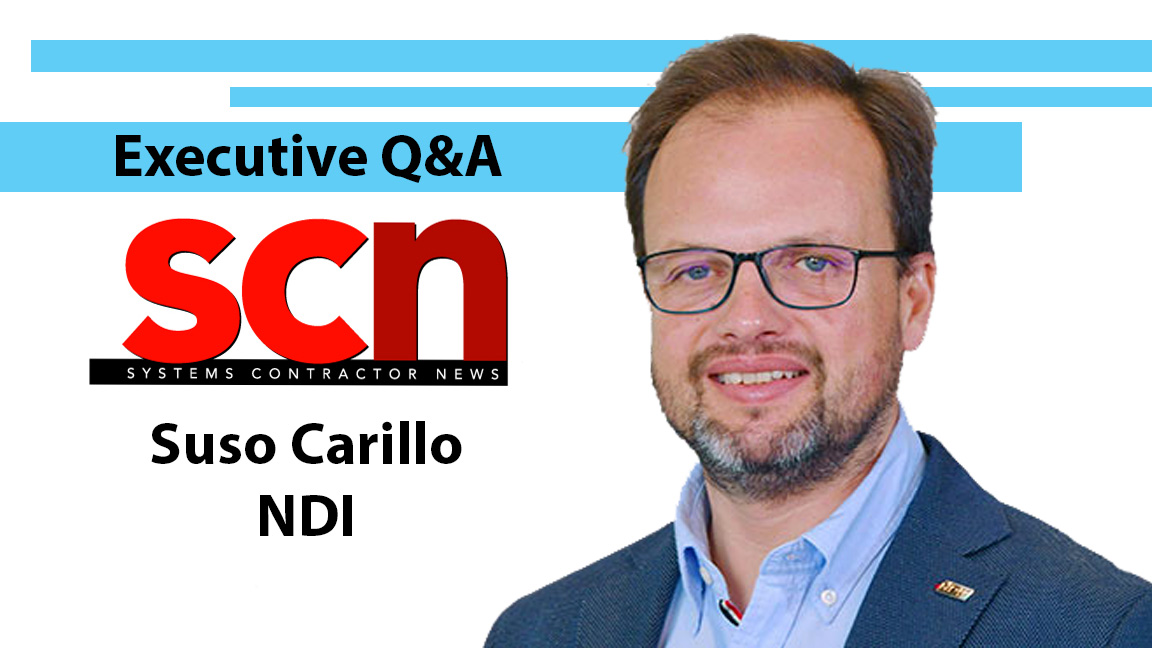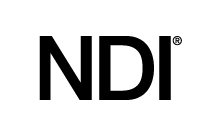NDI Launches Version 5.5 as Organization Looks to Pioneer a 'New Era' of Video
In an exclusive interview, NDI's Suso Carillo talks about the appeal of the popular network protocol, as well as recent enhancements and future plans.

Prior to the release of NDI 5.5 (see sidebar below), Suso Carillo, NDI marketing lead, sat down with SCN for a short Q&A about the evolution of the popular network protocol.
SCN: How has your background prepared you for your role?
Suso Carillo: have been with NDI since November of last year; however, I have been a fan of NDI since it first came out in 2015. NDI is this easy technology that implements low-latency video, audio, tally, and control over gigabit networking. I knew it would revolutionize the industry. I very closely followed the technology, and when it spun off into its own brand—after the Vizrt Group acquisition in 2019—I knew if the opportunity presented itself that I wanted to be a part of the team.

I have more than 25 years of experience in the media industry. Ranging from my time as a technician to being in a “boots on the ground” role, to founding TM Broadcast Magazine, alongside being the marketing director of SRT Alliance for Haivision, they have all in some way helped shape me and give me the necessary tools to succeed in my role as the marketing lead for NDI.
SCN: What do you think makes NDI unique in the industry?
SC: One of the key elements of NDI is its strong partnerships. We exist to ease the workflow for end users, so they can streamline and be more productive. In addition, we guarantee quality and the lowest latency of any other technology on the market with unparalleled interoperability. Everything we do is to drive value for our community. When I think of our role at NDI, it’s really to pioneer a new era of video.
The ultimate long-term goal is for NDI to become the video standard in the worldwide video industry. That’s our vision.
As broadcast production workflows evolve from entire on-premises control rooms to remote integration, hybrid or cloud environments, efficiency is a necessity. Users need a guaranteed solution for production that supports audio mixing, routing, and really support the new workflow from ingest to program distribution. NDI has been critical in supporting this new era of production.
A daily selection of features, industry news, and analysis for AV/IT professionals. Sign up below.
[New NDI|HX 3 Standard Offers Superior Quality, Lower Latency]
Our release of NDI 5.0 introduced NDI Audio Direct, NDI Remote, and NDI Bridge, which established support for sharing NDI sources across the internet. Alongside these features, the enhanced NDI|HX3 gives users option to deliver low latency transmission with reduced bandwidth for better quality video in any setting without the need to upgrade equipment.
SCN: Why do you think NDI has been so successful?
SC: I can sum up NDI’s success to three things: It’s easy, it’s simple, and it’s guaranteed. By using a standard IP connection via one singular Ethernet cable and downloading NDI, anyone can deploy broadcast-quality video and audio to an audience. It’s cost effective, too, which is why it’s used by millions across the globe from big broadcasters to YouTubers who want to stream themselves playing video games. We’ve only just begun to see the opportunities that NDI can provide in this cloud and IP-based workflow evolution we are currently experiencing.

SCN: What makes video-over-IP so challenging, particularly for live production?
SC: The challenge for video-over-IP stems from the fact that IP networks were not designed to transport video over them, especially high-quality, live video that the world is used to consuming. IP networks are designed to share and send information, where latency isn’t necessarily as big of a factor over a live video. When you look at live video, however, low latency is mission critical.
Take a football or soccer match, for instance. If there is even just one second of video blackout, where the content is not coming through from the live production, there is a huge problem for viewers. The quality of the viewing experience for the audience can impact viewership numbers, which has adverse effects like less advertising spend if it continues. So, with latency being one of the main challenges, especially in live streaming, NDI is the solution.
SCN: What are the short and long-term goals for NDI?
SC: NDI is becoming a de facto standard. It’s embedded into some of the biggest platforms for collaboration and communication like Microsoft Teams, Zoom, and many more. As it grows, we want a varied group of knowledgeable individuals to support its success, which is why we’ve created an NDI Advisory Board. The founding members include Vizrt Group CEO, Michael Hallen, and Dr. Andrew Cross, who first developed NDI.
[KILOVIEW Launches the NDI Recorder: Facts, Features, and What to Know]
The ultimate long-term goal is for NDI to become the video standard in the worldwide video industry. That’s our vision. In the short term, we’re looking to boost adoption in both the broadcast and Pro AV industries, but also explore other verticals where NDI is used, like in healthcare and corporate. Basically, wherever video moves, NDI can make it better.
Video is a critical tool, as we have fortunately and unfortunately learned over the pandemic the value of IP video in particular, NDI is a technology to expand creative thinking, storytelling, and ideas seamlessly thanks to its pragmatic approach to IP video technology and everything we do must come back to help others to easily connect and control their video workflows and devices to tell more stories, better.
We are also working on a robust roadmap to update the software to further support remote and decentralized production, alongside strengthening our integrations with our partners like Epic Games, Vizrt, and NewTek. In fact, NDI adoption is happening so rapidly, there are more products launching to market with NDI integration this year than ever before, nearly on a weekly basis!
NDI Launches 5.5 Update
In early August, NDI announced NDI 5.5, an update offering enhanced features to allow content producers, developers, and manufacturers more creative freedom to move video and audio across networks. The update delivers user experience improvements and adds powerful tools—including new routing tools, enhanced audio capabilities, improved features, and performance on remote connections.
Complex productions can be problematic when managing large numbers of inputs and outputs. NDI Router, a free app in the NDI Tools suite, allows users to route NDI sources as custom inputs to selected outputs with a simple click. Buttons can have bespoke names, and styles and users can preview the source assigned to any destination—making it easier than ever to manage and control inputs and outputs without supervising each stream independently.
Building on NDI Audio Direct, NDI AudI/O now allows SDK users to connect any audio device as an NDI source without the need to use third-party software applications. This feature significantly simplifies workflows, saving time and removing a layer of complexity.
Positioned to support content creators who want to take advantage of the flexibility of IP network, NDI 5.5 also boasts simple but effective changes to the NDI tools launcher, allowing more control by users, faster connections with talkback when bringing in remote video sources via NDI Remote, multiple source support in NDI Webcam, and more.
“NDI 5.5 follows on from the recent release of the NDI SDK for Unreal Engine 5 plugin, further demonstrating our commitment to provide the operating ‘glue’ that creators instinctively use as they deliver their craft, and also give our partners an ever-evolving platform to create exciting products,” said Tarif Sayed, president, NDI. “It's important to us that our community of users get the best experience, and NDI 5.5 delivers exciting and improved elements that continue to make NDI the standard of choice for visual storytellers, content creators and manufacturers around the globe.”

Mark J. Pescatore, Ph.D., has been the content director of Systems Contractor News since 2021. During his career, he's hosted and programmed two ongoing regional industry trade shows (including Future B2B's AV/IT Summit), produced and hosted podcasts and webinars focused on the professional video marketplace, taught more than a dozen college communication courses, co-authored the book Working with HDV, and co-edited two editions of The Guide to Digital Television.
